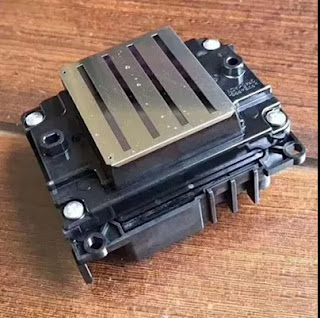No matter if you use branded, compatible or reused cartridges, there is a chance of the ink drying out and clogging the nozzle. This can cause further problems if not addressed properly and could even cause your printer to break down. However, this can be solved by cleaning the printhead.
Here are some of the ways you can clean the printhead both manually, from a PC or Mac and via a programmed system.
Do you know what the time when you should clean the printhead?
If your printer is printing blank pages but your ink levels are normal the problem will, more than likely, be the water based printheads. If it has been a while since your last print, some of the ink in the cartridges may have dried out. This blocks up the printheads and allows no ink to pass through onto the paper. To fix these issues, the printheads will need cleaning.
A printer works by layering tiny dots in various formations, using CMYK to create the broad range of colours we see with the naked eye. CMYK stands for cyan, magenta, yellow and key, which is usually black. Each colour has its own nozzle, so if one is blocked such as, yellow, this will alter the layering technique of the dot work and affecting the colour produced on the page. Cleaning the printhead will help improve the quality of the printout.
It’s important to try to avoid cleaning the printhead as little as possible as it consumes quite a bit of ink. Only clean the print head when the quality of the print has declined and is noticeable.
You can clean the printhead either manually or from your printer or computer. Before you start, you’ll want to perform a nozzle check to ensure your printhead needs cleaning, as this will save ink.
How to clean an Epson printhead?
If you’re unsure on how to clean an Epson printhead these instructions should provide guidance. Most modern printers will have similar cleaning functions to the Epson, so this should help even if your printer isn’t of the Epson brand.
If the low ink light is flashing or permanently on, you do not need to perform a nozzle check. This is because you’re out of ink so the cartridge itself needs replacing.
If the ink light is off, hold the ink button down for three seconds, this will start the cleaning process. You’ll know the printer is working as the power and ink light will start flashing. It’s important you do not turn the printer off while this is happening as this could damage the machine.
Once the flashing has stopped, perform a nozzle check again to confirm that the print head is clean.
If you find that the problem continues, repeat the process. You may want to leave the printer overnight for the ink to settle before trying again.
Okay, These all above are my share about the tips of cleaning inkjet printer nozzles. Hope them can be useful to you. If you have any other needs or questions welcome to contact us at any time. We will provide you the best quality product and service. Thank you for your reading.
Nanjing Feiyue paper Industrial Co.,ltd
www.feiyuepaper.com
Email: sales@feiyuepaper.com
jenny@feiyuepaper.com
Whatsapp: +8618755150383




















